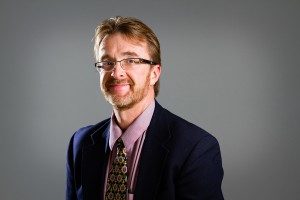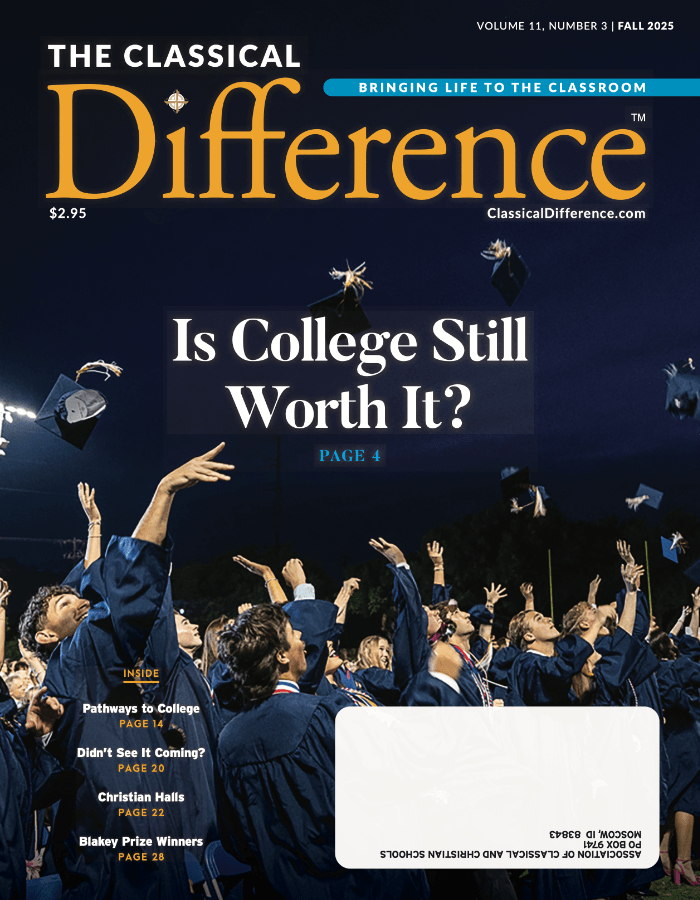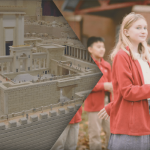There is a lot of fear today that children are not getting enough science and technology training, especially in a K-12 classical Christian school.
The race for technical skill training is in many ways undercutting the type of education that is really needed to be a success in the scientific and engineering industries. As the demand for more K-12 STEM education continues culturally, it is time to ask: is this really the best way to prepare tomorrow’s scientists, computer programmers and engineers? My guest today is a founder and president of a top engineering firm and he has some words of encouragement to those raising the next generation in a high tech world. What does this leader in a high tech industry really want in an employee?

David Cutbirth
David Cutbirth, P.E., LEED AP, is the founder and President of DC Engineering in Boise, ID. Since DC Engineering’s inception, he has helped define/refine and implement the vision of contributing the success of their clients. He has led the company from a sole proprietorship to a corporation of nearly 170 personnel with offices in 7 states.
DC Engineering has grown to now provide consulting engineering in the disciplines of mechanical, electrical, structural, refrigeration, controls, and chemical while helping both identify and solve business solutions in creative ways. In addition, he helps provide leadership and guide technology solutions from an IT perspective through NearLo Technologies.
David is actively involved in defining sustainable design practices that take into consideration the political, ecological, social, technological, and individual’s perspective that are also cost-conscious. His leadership experience in multiple organizations–seeking first to understand and then be understood by utilization of heart, head, and hands–has helped him lead strategic planning efforts from start-ups to growing companies with offices in multiple geographic areas and cultures.
He has a passion for life-long learning and passing on experiences to others in order to help not just identify short term solutions, but long term success of clients (both internal and external) to an organization.
In order to be equipped for the digitial world, are children in K-12 classical christian schools receiving enough science and technology training? As STEM (science, technology, engineering and mathematics) programs grow in popularity, and the world is increasingly getting more complex, wouldn’t it make sense to send your child to a school where the main focus is the sciences rather than the Liberal Arts? Surprisingly, NO! Our special guest today explains why this dichotomy exists between the sciences and liberal arts, but how the liberal arts is the most critical one for building the worldview and “foundational tools” needed for future engineers to best serve their customers.
Show Notes
David Cutbirth is founder and president of DC Engineering in Boise with over 170 personnel in over seven states. He has held “leadership in multiple organizations, seeking first to understand and then to be understood by utilization of the heart, the head and the hands to lead strategic planning.” He is well-equipped to address what is most needed as we educate future engineers today for tomorrow’s job market. He notes that there are multiple elements that engineers need to be especially equipped to address: support of the surrounding community and values, multiple stakeholders, operational components, maintenance and reliability of cost. In other words, engineers don’t just sit behind a desk designing things.
What are engineering companies like Cutbirth’s wanting and looking for when hiring? “While engineering is a scientific or mathematical process… the exciting thing that we’re seeing is that people graduated from classical schools and other places… realize that bridging that gap provides you additional opportunities not just in the design but in the defining aspect of the role of engineers.” One of the main qualifications is someone willing to learn rather than a person who can only do one thing or think about something in only one way. Today’s engineers need to be critical thinkers, not one trick ponies, and a liberal arts education goes farthest in shaping minds, hearts and understanding.
So where does STEM fit in? He points out the popular misconception that STEM is foundational but it is not foundational. Science, technology, engineering and math are elements or tools used by engineers, but the root that is foundational consists of your worldview that comes from a well-rounded education. According to Cutbirth, an engineer turns ideas into reality using scientific principles, mathematical concepts and other elements that allow them to communicate in a language to build things or construct things. But BEFORE you can build something, you must define what you are doing. As Cutbirth explains, “Have you defined the foundational basis of what you’re worldview is…the foundational truths that will allow us to communicate and build and create and do things and turn our world into a reality.” That worldview best comes from a broad liberal arts education.
Additionally, technological skills that were once specialized can now often be done with everyday internet tools. Students can be taught new specialized skills later but the foundational skills of discernment, storytelling, and logic application, to name a few, span the disciplines, are taught in the well-rounded liberal arts education and are noticeably lacking in the narrow scientific field.
Additional Resources Mentioned in today’s Podcast:
The 8th Habit: From Effectiveness to Greatnessby Stephen R. Covey
Cents and Sensibility: What Economics Can Learn from the HumanitiesbyGary Saul Morson and Morton Schapiro, Northwestern University professors of the humanities and economics, respectively.
The Fuzzy and the Techie: Why the Liberal Arts Will Rule the Digital World by Scott Hartley; points out the false dichotomy between the science and humanities











